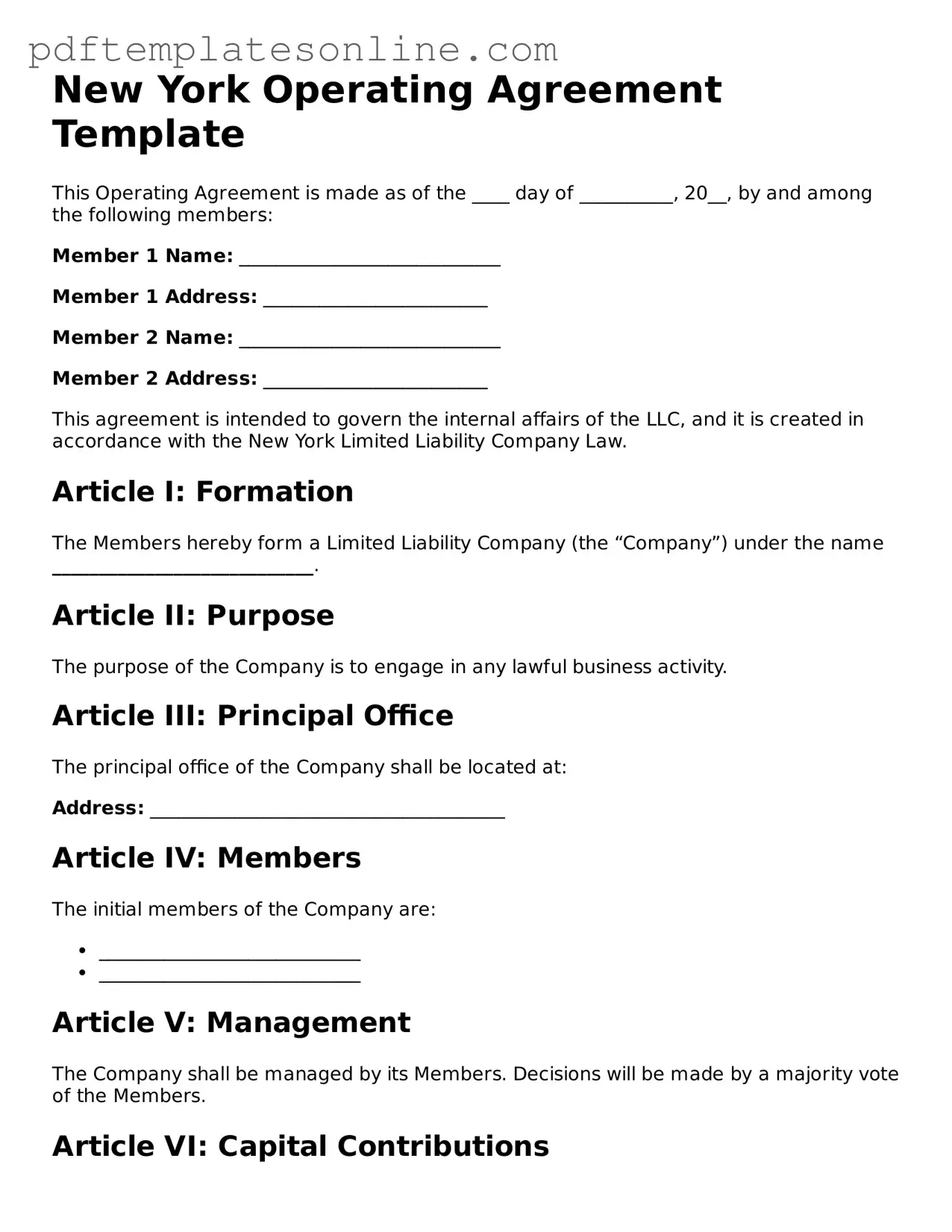When forming a Limited Liability Company (LLC) in New York, completing the Operating Agreement is a crucial step. However, many individuals make common mistakes that can lead to confusion or legal issues down the line. Understanding these pitfalls can help ensure that your Operating Agreement is both accurate and effective.
One frequent mistake is failing to identify all members of the LLC. It’s essential to list every individual or entity involved in the company. Omitting a member can create disputes later on, as everyone needs to be clear about their roles and responsibilities from the outset.
Another common error is neglecting to outline the management structure. Whether the LLC will be member-managed or manager-managed should be explicitly stated. This clarity helps in determining who has the authority to make decisions on behalf of the company, which is vital for smooth operations.
Some people also forget to include capital contributions. Each member’s initial investment in the LLC should be clearly documented. Without this information, it can be challenging to determine ownership percentages and profit distributions, leading to potential conflicts among members.
Additionally, many individuals make the mistake of not specifying profit and loss distribution. How profits and losses will be allocated among members should be clearly defined in the Operating Agreement. This detail is crucial for financial planning and maintaining good relationships among members.
Another oversight involves not addressing the process for adding or removing members. Life changes, and so do business circumstances. Including a clear procedure for membership changes helps to avoid confusion and ensures that the LLC can adapt as needed.
Some people also neglect to include dispute resolution mechanisms. Conflicts can arise in any business. Having a predefined process for resolving disputes can save time and money, and it can prevent issues from escalating into legal battles.
Moreover, failing to address dissolution procedures is a common mistake. It’s important to outline how the LLC can be dissolved if necessary. This ensures that all members understand the steps involved and can plan accordingly should the need arise.
Another pitfall is using vague language throughout the document. Clarity is key in legal documents. Ambiguous terms can lead to different interpretations, which can create problems in the future. Therefore, it’s vital to be as specific as possible.
Lastly, many individuals forget to review and update the Operating Agreement regularly. As the business evolves, so too should the Operating Agreement. Regular reviews ensure that the document remains relevant and accurately reflects the current state of the LLC.
By avoiding these common mistakes, individuals can create a robust Operating Agreement that serves as a solid foundation for their LLC. A well-prepared agreement not only helps in preventing disputes but also provides clarity and direction for all members involved.
